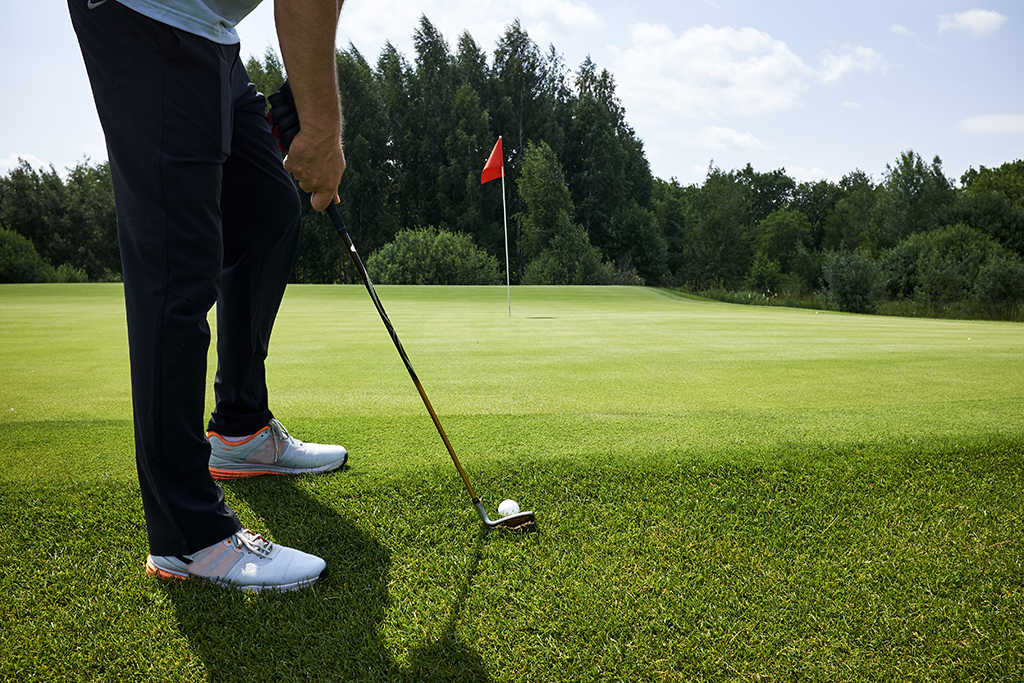
One of the most common and frustrating issues for amateur (and often not-so-amateur) golfers is slicing the ball; you see it all on the time on golf courses and driving ranges. But can it be fixed, or is it something that golfers just have to live with, accepting that they’re never going to get that distance?
Well, here at The Insurance Emporium we’re committed to helping you get the most from your game (check out our putting tips), so we’ve put together a quick guide to help you sort out that slice, but first of all, let’s have a look at what we’re talking about.
WHAT IS A SLICE IN GOLF?
A slice is a golf shot that makes the ball curve away from you; to the right for right-handed players, and the left for left-handers. It can be intentional, but most of the time it’s a mistake.
Often, it’s not caused by one particular thing but an accumulation of issues; it could be that your club face is too open; the direction the clubface is facing upon impact will affect the direction the ball goes in. Or you might not have perfected your stance and are holding your arms too far away from your body.
Let’s have a look at a few things you can work on.
1. CLUBFACE
An open clubface has a huge impact on the direction of the ball, when the clubface is open it’s pointing to the right of the target, so that’s where the ball will go and is one of the most common causes of a slice in golf. It’s not just something that happens on impact though, so you need to get it square as early in your swing as possible. Take a look at our blog for more tips to improve your swing.

2. GRIP
One of the best ways to square your clubface is to work on strengthening your grip. The club needs to rest in the fingers, not the palm, with the lead thumb just off-centre and not down the middle of the grip, which often happens with a slice. A stronger, neutral grip will help open the club slightly, so you can get it squared up.
3. POSTURE
Good posture is the foundation of your swing, it helps you move freely and efficiently without being either too upright or too bent over. The key is to remember to keep your head up and your arms straight and relaxed, with the club held at waist height.
All that wiggling around on the tee that the pros do isn’t just for show, they’re making sure everything is right as it only takes one little shift and your timing will be off and the clubface will rotate.
It’s worth noting that 70% of amateur golfers don’t hold their posture during a swing, so don’t be too hard on yourself! We have more tips for correcting your posture in our post about golf stance.
4. BALL POSITION
Not setting up your ball properly can also increase your chance of hitting a slice. Try bringing the ball closer, with the ball inside the left heel (right heel for left-handed players). This might also help with distance.

5. WEIGHT TRANSFER
Try to work on a good weight shift; the movement should start with the lower body – feet, knees and hips – then move to the upper body – torso, arms and hands. Just remembering the simple tip of transferring your weight from the back foot to the front will have a positive impact.
When playing golf, the aim of the game is to get the ball across the fairway, so correcting a slice is important; everyone wants that perfect swing. Luckily, it’s something that can be fixed, and the great news is that if you work on some of the tips mentioned above, you can improve other parts of your game too.
You also want the reassurance that if anything unexpected were to happen, either on or off the course, you have the right cover for you in place; whether you play golf to relax and keep fit, or you see yourself as a bit of a pro, you’ve probably built up a set of clubs that you wouldn’t want to play without.
We have 3 different levels of golf insurance policies, each with standard benefits such as new for old, loss, theft and accidental damage and public liability and you can tweak these with a range of optional benefits. No matter what your handicap is, we’ve got a policy that will suit you to a tee, so give us a call and get a free, no-strings quote.
All content provided on this blog is for informational purposes only. We make no representations as to the accuracy or completeness of any information on this site or found by following any link on this site. We will not be liable for any errors or omissions in this information nor for the availability of this information. We will not be liable for any loss, injury, or damage arising from the display or use of this information. This policy is subject to change at any time.
We offer a variety of cover levels, so please check the policy cover suits your needs before purchasing. For your protection, please ensure you read the Insurance Product Information Document (IPID) and policy wording, for information on policy exclusions and limitations.


